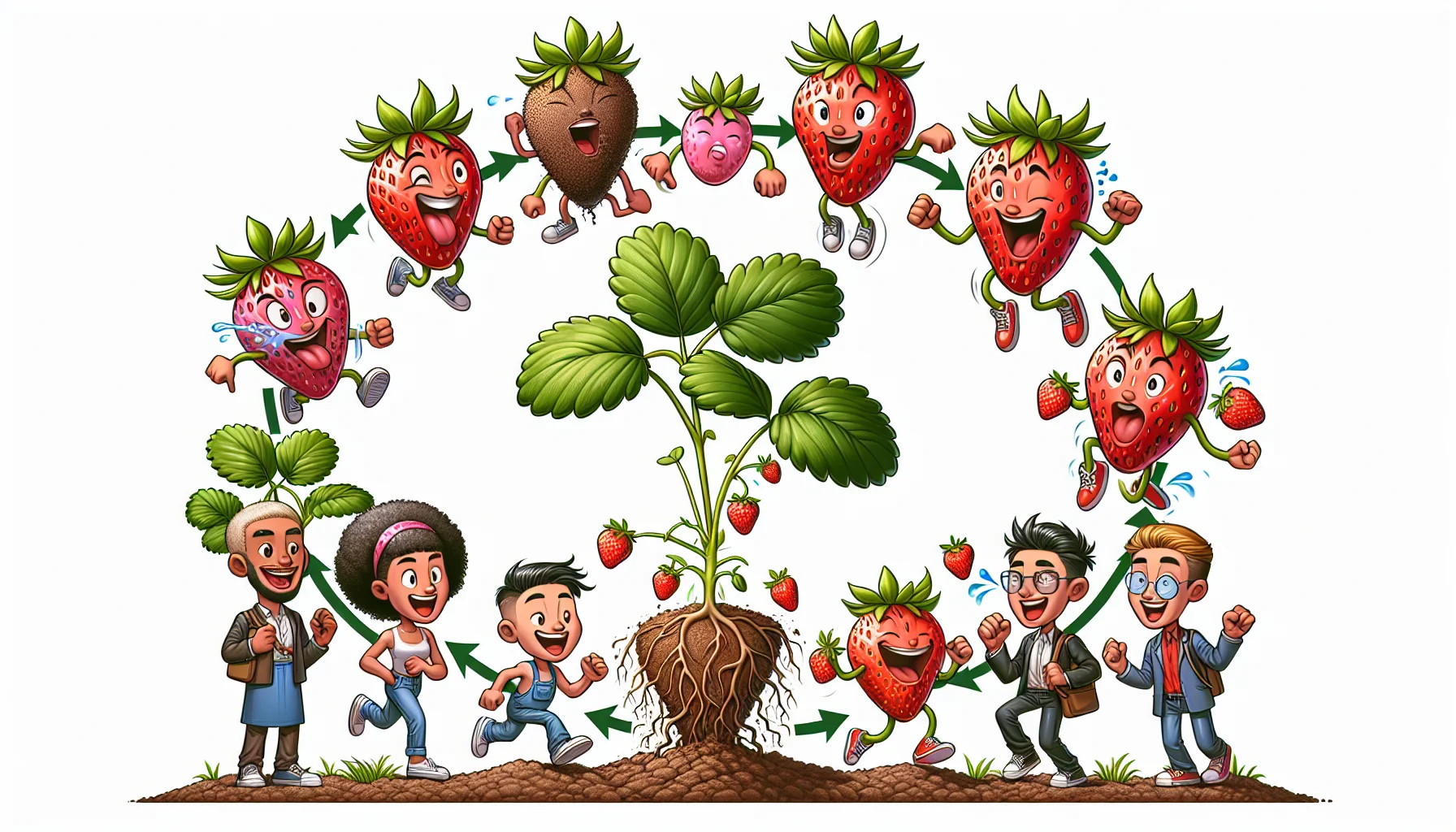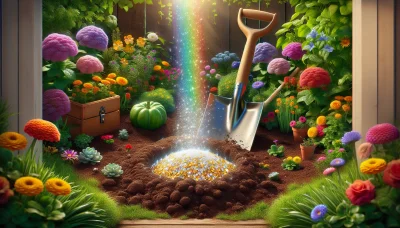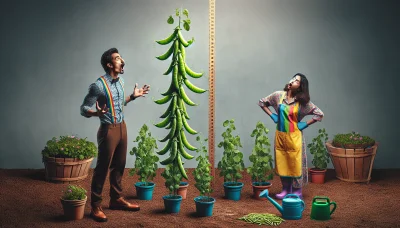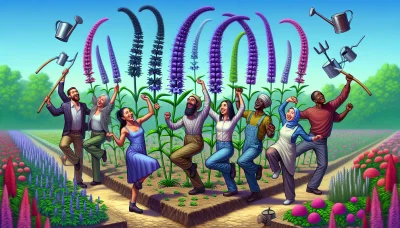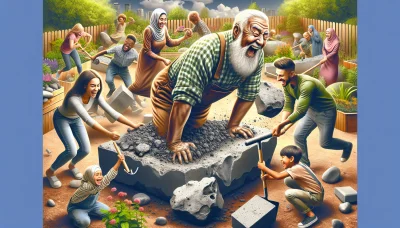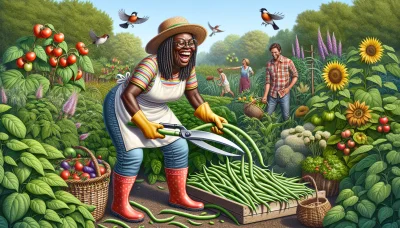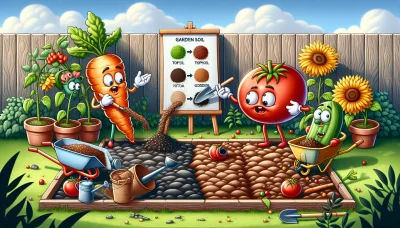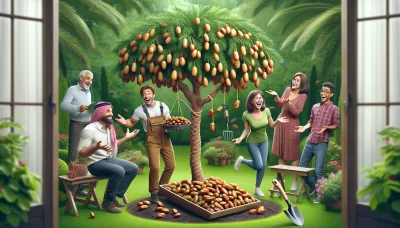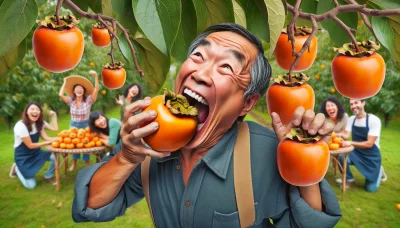Strawberry life cycle Quiz
Test Your Knowledge
Question of
Understanding the Strawberry Life Cycle
For gardeners and strawberry enthusiasts, understanding the life cycle of strawberries is crucial. It not only helps in maximizing the yield and quality of the strawberries but also in ensuring the plants are healthy and thriving throughout the year. By knowing the different stages from germination to fruiting, gardeners can provide the right care at the right time, including proper watering, fertilization, and pest control measures. This knowledge also aids in planning the planting schedule to ensure a continuous harvest and in implementing strategies for year-round cultivation in different climates.
Stages of the Strawberry Life Cycle
- Germination
- Vegetative Growth
- Flowering and Fruiting
- Dormancy
Germination Process
Strawberry seeds germinate through a process that requires specific conditions to be met for successful growth. Initially, the seeds need to be exposed to light, which is essential for germination, so they should not be buried deeply in the soil. A thin layer of soil or even placing them on the surface with a light covering can be sufficient. The soil temperature plays a critical role, with an ideal range being between 60-75°F (15-24°C) for most strawberry varieties. Maintaining consistent moisture is crucial, as the seeds must not dry out; however, overwatering should be avoided to prevent rot. The process can be slow, taking 2 to 3 weeks for seeds to sprout, requiring patience and careful attention to the growing environment. Strawberry plants prefer slightly acidic soil with a pH between 5.5 and 6.8. Ensuring these conditions can help in achieving successful germination and the eventual growth of strawberry plants.
Vegetative Growth and Maintenance
The vegetative growth phase of strawberries is a critical period where the plants focus on developing strong roots, leaves, and runners, setting the stage for future fruit production. During this stage, care and maintenance are paramount to ensure the health and productivity of the plants. Proper irrigation is essential to maintain soil moisture without waterlogging, which can lead to root diseases. Nutrient management, particularly nitrogen, is crucial for promoting leafy growth, but it must be balanced to avoid excessive vegetative growth at the expense of fruit development. Regular weeding is necessary to reduce competition for nutrients and water, and mulching can help retain soil moisture, regulate soil temperature, and suppress weed growth. Monitoring for pests and diseases and implementing control measures as needed can prevent significant damage to the plants. By providing the right conditions and diligent care, strawberry plants can develop a strong vegetative foundation, leading to a successful fruiting season.
Flowering and Fruiting
The transition from flowers to fruit is a fascinating process that begins with pollination. Pollination occurs when pollen from the male structure of a flower, the stamen, is transferred to the female structure, the pistil. This can happen through various means, including wind, water, and animals, particularly insects and birds. Once pollination occurs, the fertilized flower begins the process of fruit development. This stage is crucial as it sets the foundation for the type and quality of fruit produced. Factors influencing fruit production include environmental conditions such as temperature, sunlight, and water availability, as well as the genetic makeup of the plant and the efficiency of pollinators. Proper pollination is essential for fruit set, the process where flowers develop into fruits. Following pollination and fertilization, the ovary of the flower starts to grow and develop into a fruit, encasing the seeds, which will eventually mature and potentially give rise to new plants. This cycle of flowering and fruiting is vital for the reproduction of many plants and the production of crops for human consumption.
Dormancy and Preparation for the Next Cycle
The dormancy stage is a crucial period in the life cycle of a strawberry plant, marking a time of rest and rejuvenation. During this phase, the plant's growth and metabolic activities slow down significantly, conserving energy for the upcoming growing season. This natural process is vital for the plant's health, as it allows for the replenishment of resources consumed during the active growing period. Preparing strawberry plants for dormancy involves several key steps, including reducing watering to minimize the risk of root rot, applying a layer of mulch to protect the plants from extreme temperatures, and removing any dead or diseased foliage to prevent the spread of pests and diseases. These preparatory measures ensure that the strawberry plants are well-equipped to survive the winter and thrive in the next growing cycle.
Common Challenges in Growing Strawberries
- Pests
- Diseases
- Environmental Stress
| Challenge | Solution |
|---|---|
| Pests | Use natural predators like ladybugs, or apply organic pesticides. |
| Diseases | Ensure proper plant spacing for air circulation, and use fungicides when necessary. |
| Environmental Stress | Use mulch to maintain moisture, and provide shade during extreme heat. |
